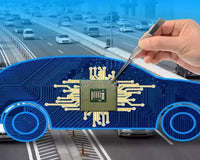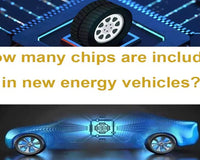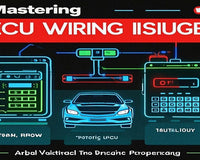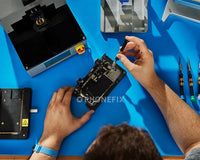
1. The Observational Method
The first step in any repair process is astute observation. By employing a microscope integrated with the latest in optical technology, such as the AIXUN DM201M Microscope, technicians can detect microfractures, solder bridges, and degraded components invisible to the naked eye. This method lays the foundation for all subsequent repair strategies, offering crucial insights that steer the course of action.

2. The Contrast Method
When validation is paramount, the contrast method—comparing waveforms or performance between a suspect ECU and a known good unit—can be the linchpin in confirming the presence of a fault. This method is particularly robust in unmasking latent issues that defy conventional diagnostics.
3. The Multimeter Measurement Method
The art of diagnostics is built upon the precision of measurements. The UNI-T UT123D multimeter is an ally in this endeavor, with a suite of functions tailored to the voltage, current, and resistance assessments critical to ECU maintenance. Technicians can decipher electrical irregularities, determining the health of components and the integrity of circuits with surgical precision.

4. The Oscilloscope Detection Method
For anomalies of a more elusive nature, the DS1104Z oscilloscope is the troubleshooter's tool of choice. With its power to capture, analyze, and display the waveform of electronic signals, it unveils the dynamic behavior of components and circuits. This method, often the vanguard of diagnosing intermittent issues, is essential for a comprehensive health check of the ECU.

5. Replacement Repair Service
In cases where the damage is irreparable, replacement is the most prudent option. For example, drive module, ignition module, induction communication module, etc. After determining the damaged IC module, replace it with the same model of ECU IC chip.
6. The Heating Method
Sometimes, the key to a repair is controlled application of heat. The 8610DX-Pro heat gun, integrated into the maintenance process, is invaluable for tasks such as reflow soldering. By leveraging the temperature sensitivity of materials, this method can mend solder joints and facilitate the replacement of components with the utmost precision.

7. The Repair Welding Method
Aixun T3B soldering station, the epitome of refinement in soldering technology, takes center stage. With adjustable temperature settings and fine-tipped irons, it enables the removal and replacement of surface mount devices (SMDs) with surgical accuracy. The repair welding method is a potent technique in restoring damaged circuitry and ensuring the longevity of repairs.

8. The ECU Test Bench Maintenance Method
The ECU Test Bench provides a controlled environment for real-time monitoring and simulation of ECU behavior. Such as the GODIAG GT100+, Maintenance of this equipment is as critical as the ECU itself, and involves stringent calibration and periodic inspection to ensure accuracy.

9. The Clone Hair Transplant
Making a clone of an ECU, aptly named a clone "hair" transplant, is a practical solution when an identical replacement is not readily accessible. This method demands specialized tools and expertise to transfer the data from the original ECU to its clone without error, effectively breathing new life into the vehicle's electronic brain.
10. The Programming Data Sent Method
The final act in any ECU repair is programming—the method by which the retrieved or replacement ECU is synchronized with the vehicle's system. Tools like the KTAG Master ECU programmer provide technicians with the ability to read and write the ECU's engine firmware, customizing its behavior to match the vehicle's specifications.

In conclusion, the landscape of ECU maintenance is a conglomerate of art, science, and technology. Each method is a testament to human ingenuity, and when wielded by skilled hands, ensures the continued performance and safety of our vehicles. For automotive technicians, staying abreast of these methods is paramount to delivering optimal service in the age of automotive electronics. Collaborative platforms like the ecufixtool store serve as a beacon, offering a one-stop solution for procuring the advanced tools that underpin these methodologies.
Navigating the realm of ECU repair is akin to an odyssey, with each tool and method a pillar of support on the path to mastery.









